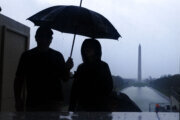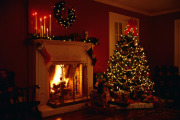After weeks of suffering, it’s probably safe for those experiencing allergies in the D.C. area to breathe again.
The prime time for trees and grasses to release pollen into the air is quickly winding down.
“We sort of get a reprieve with the pollen,” said Susan Kosisky, chief of the U.S. Army Centralized Allergen Extract Lab in Silver Spring, Maryland, which tracks pollen counts for the D.C. region.
The season for tree pollen is almost done, and the region is also at the end of the grass season, Kosisky said.
Grasses are “a significant allergenic offender, but it’s the trees that really put out that yellow film on the cars,” she said.
Next up is the ragweed season, which Kosisky said starts in late July or August.
There is a secondary peak for grass pollen that happens in the September-October time frame, but Kosisky said the grass pollen level is lower compared to what is released in May.
One remaining concern for allergy sufferers is mold spore levels, which Kosisky said could blossom as a result of summer thunderstorms and rain showers.








